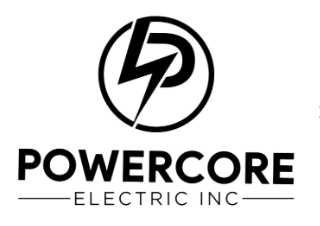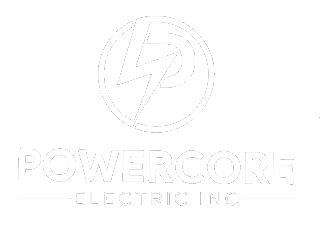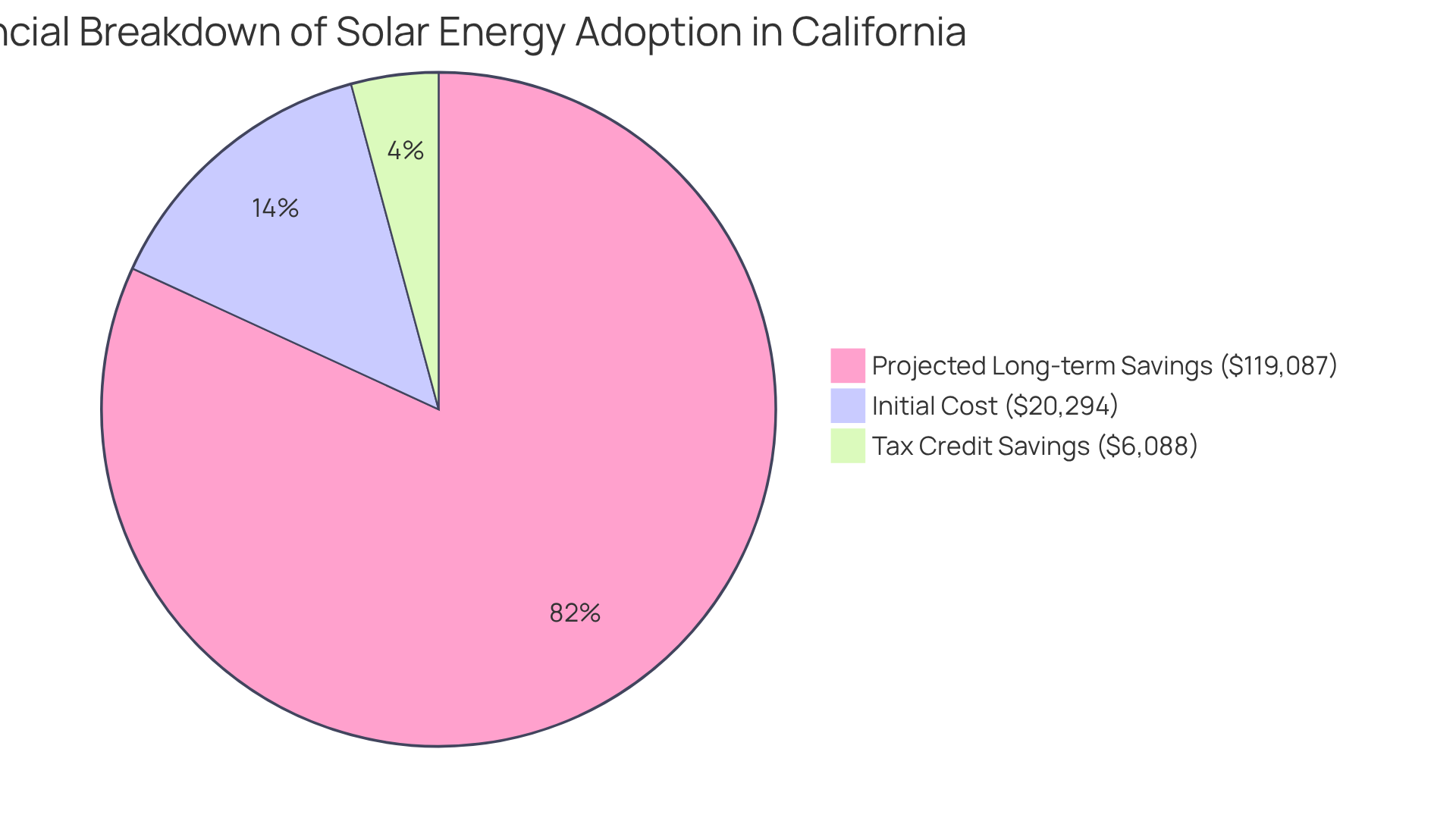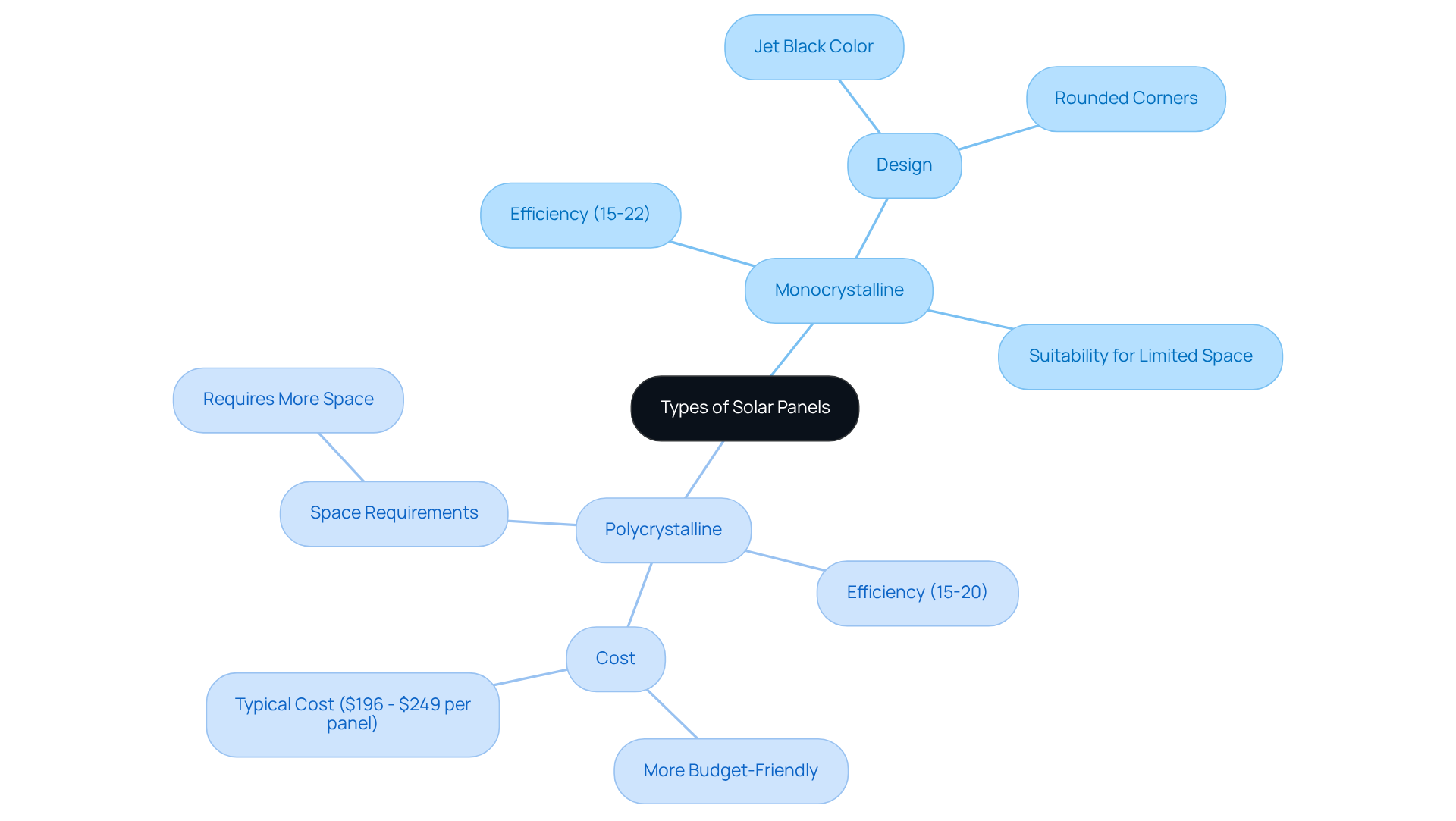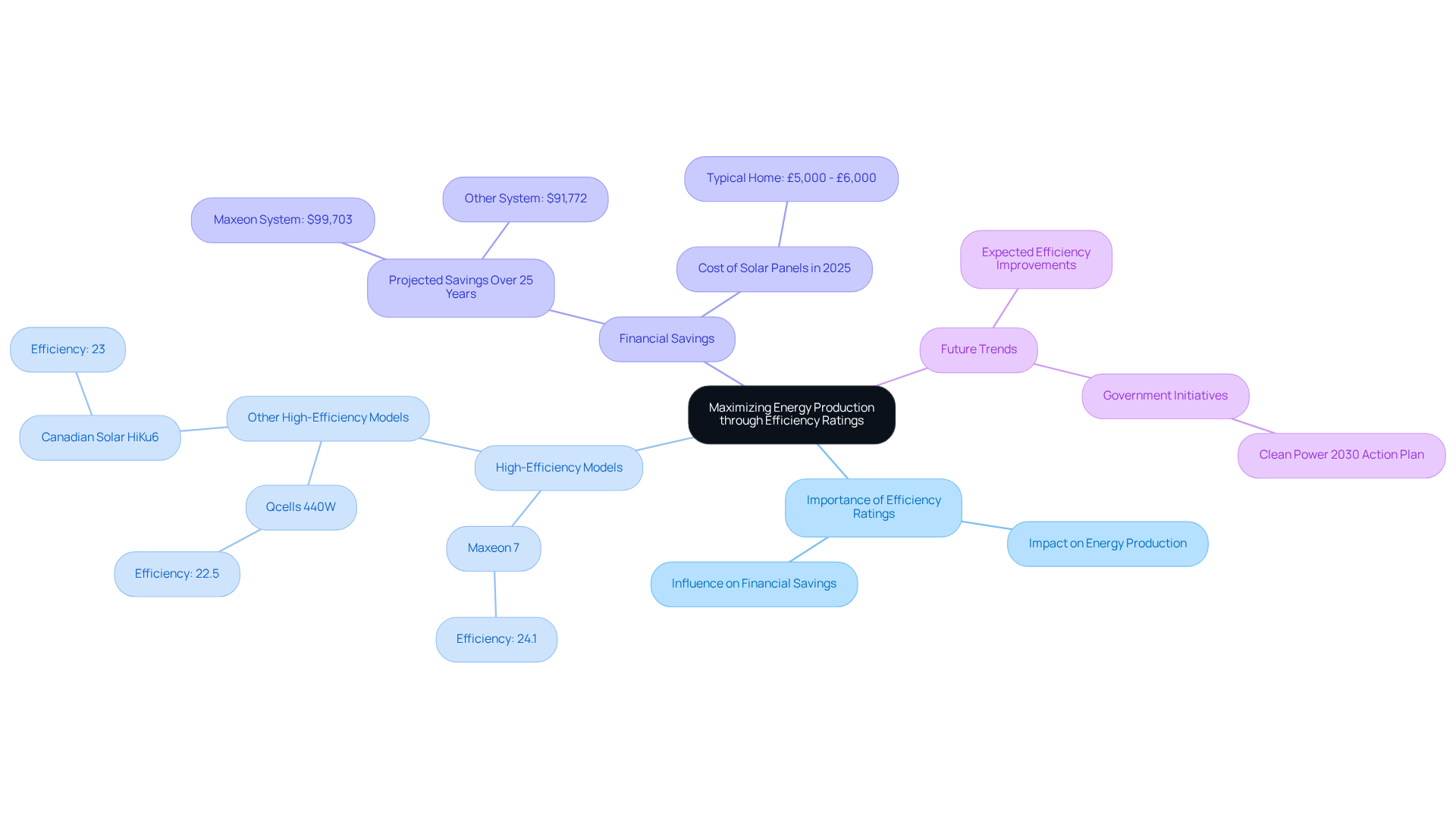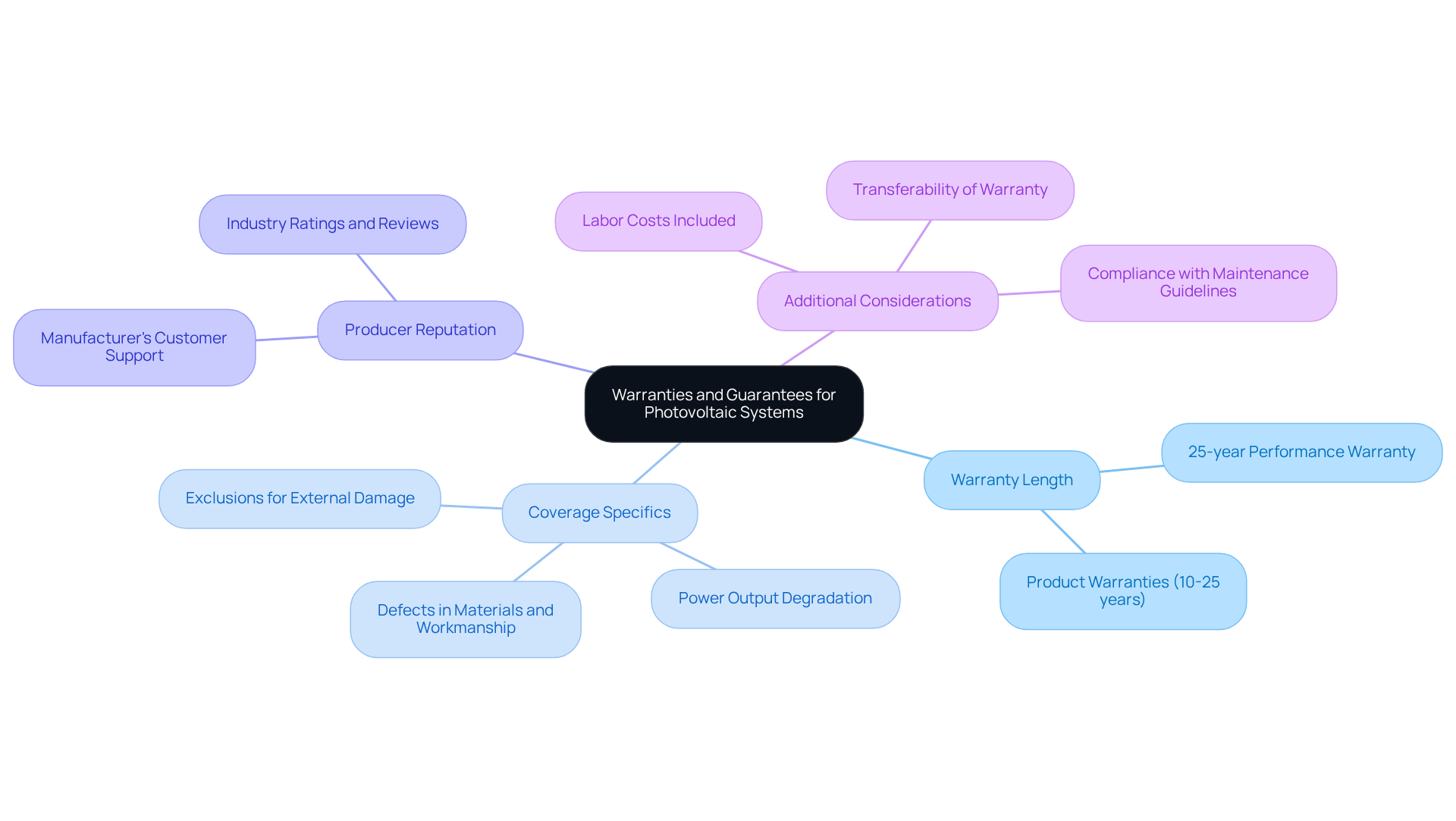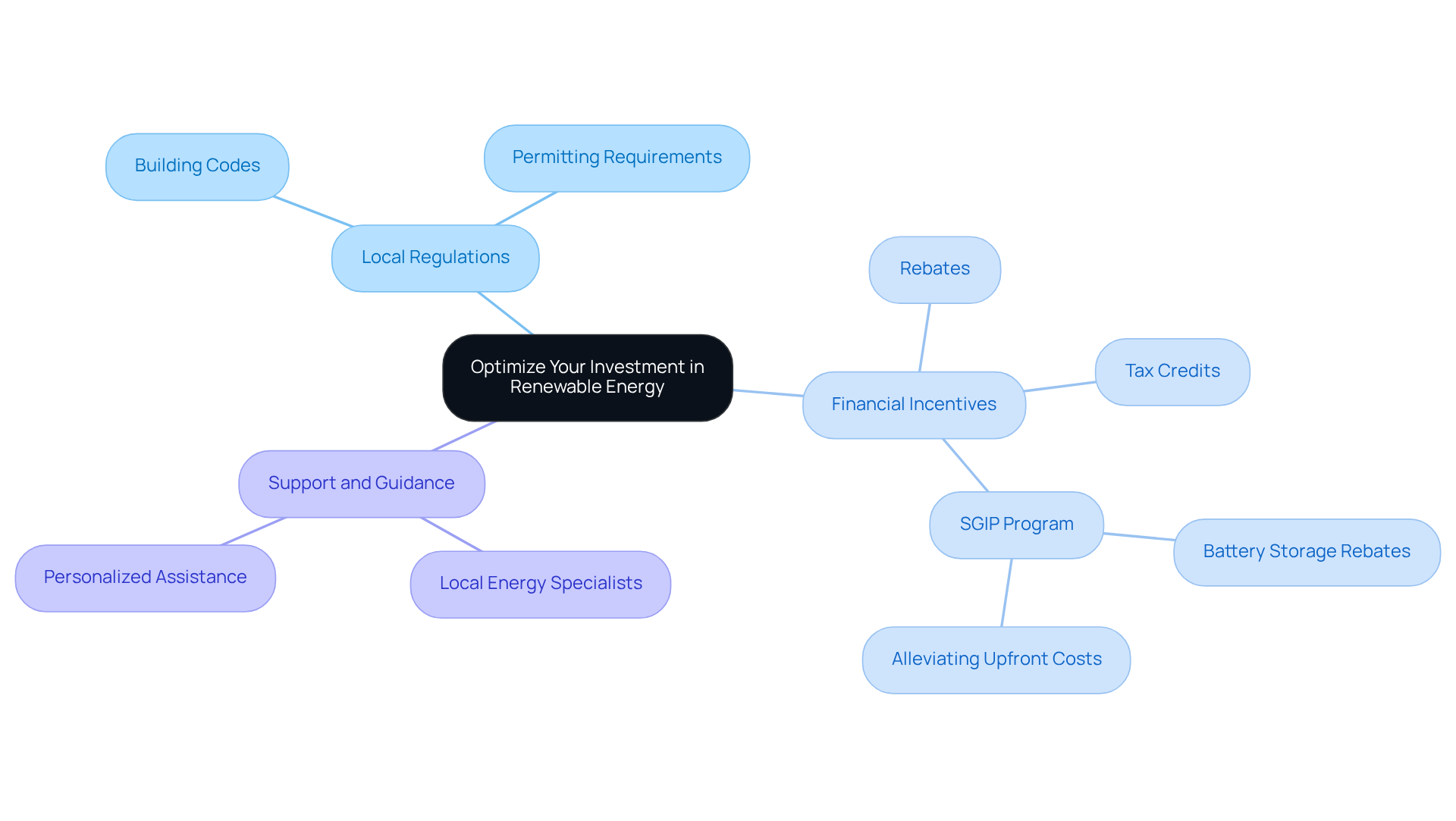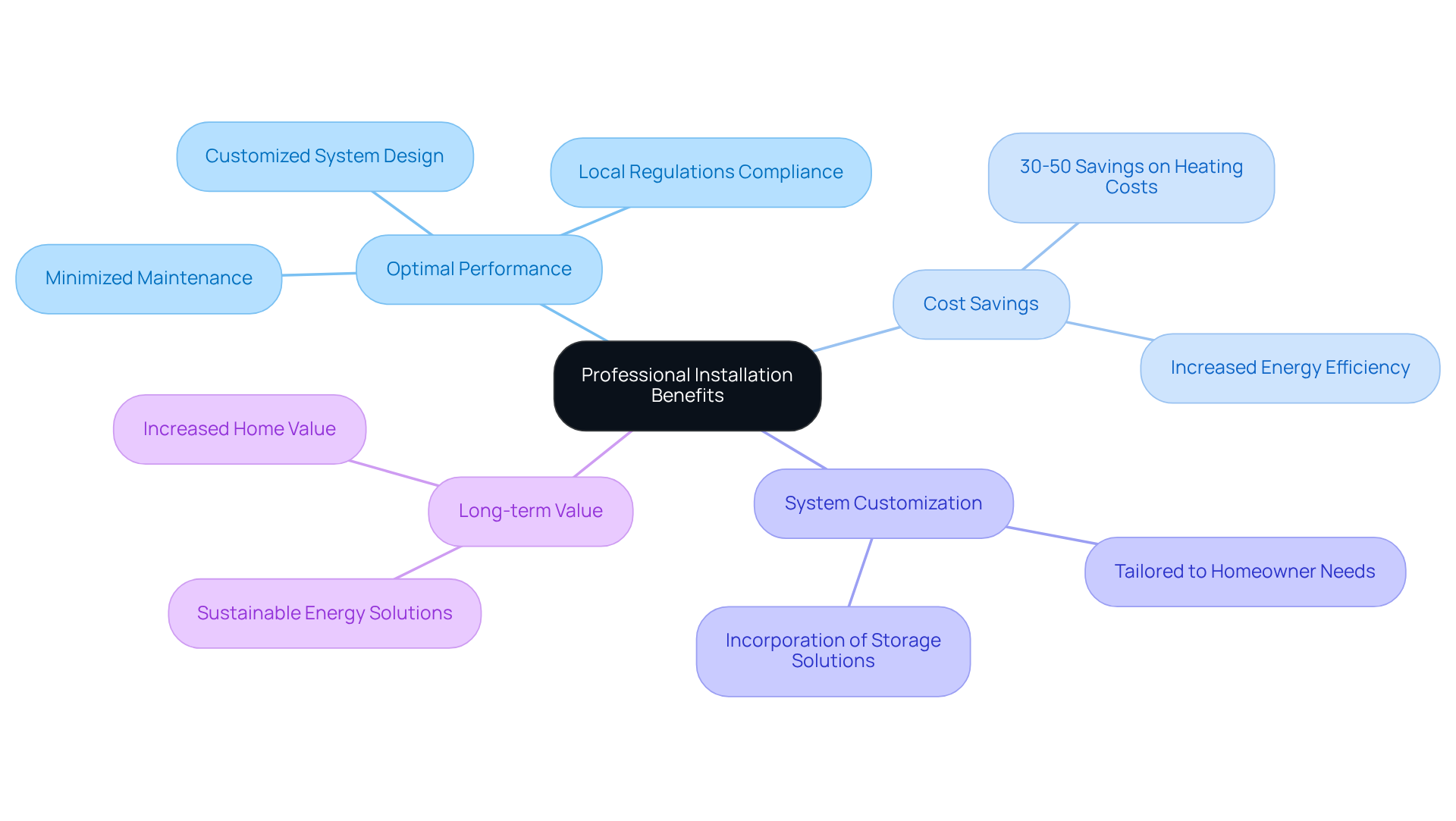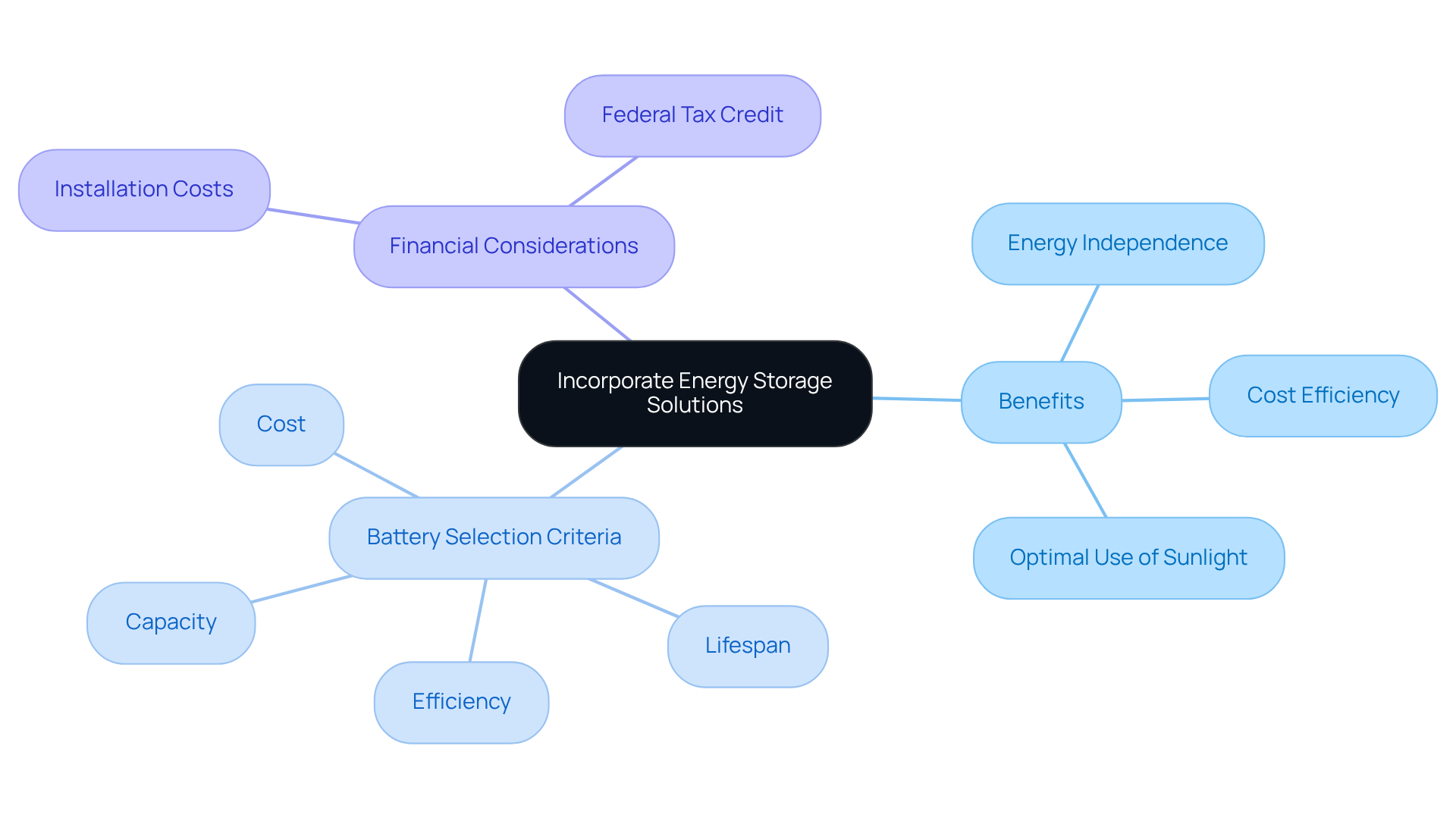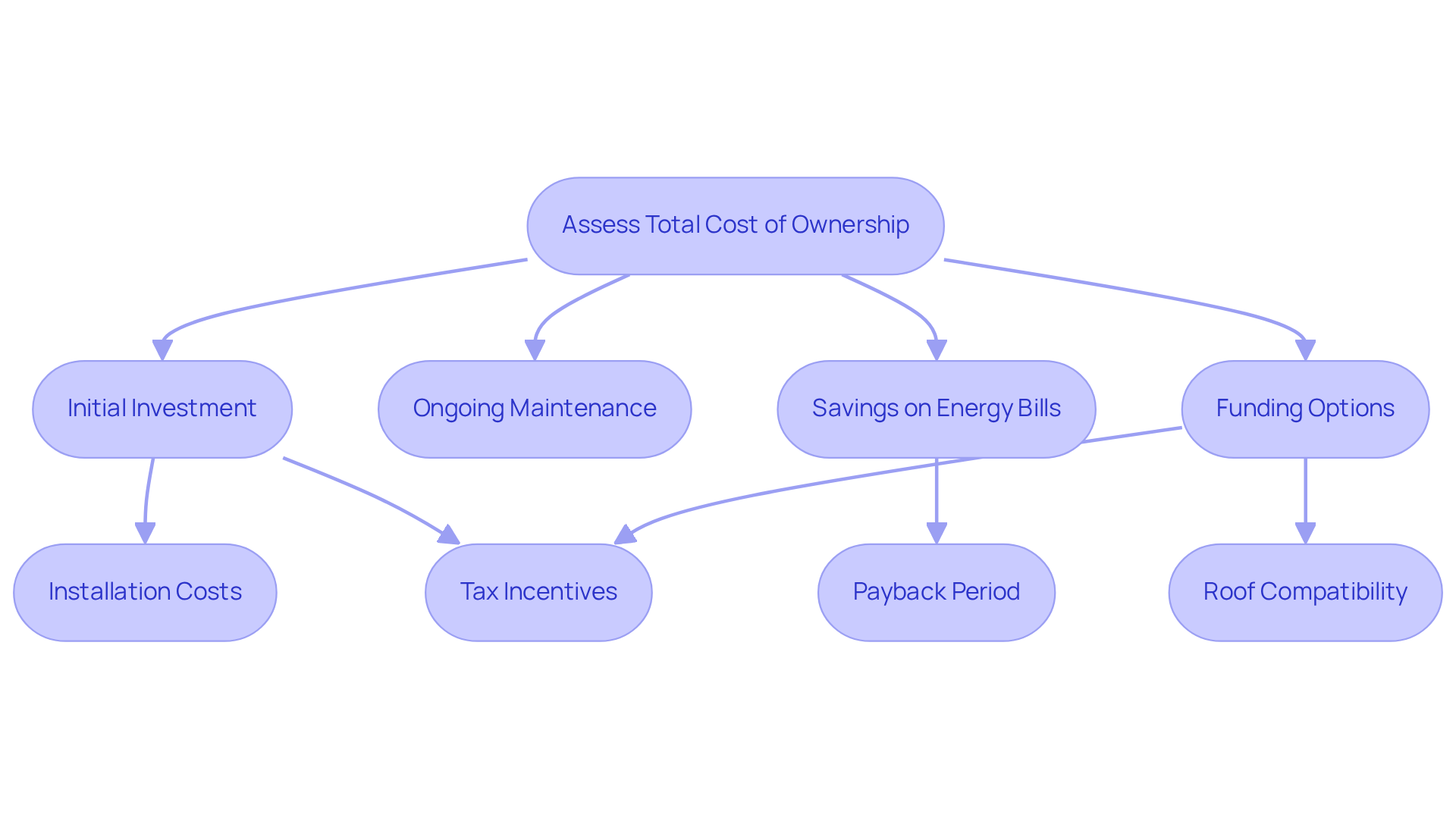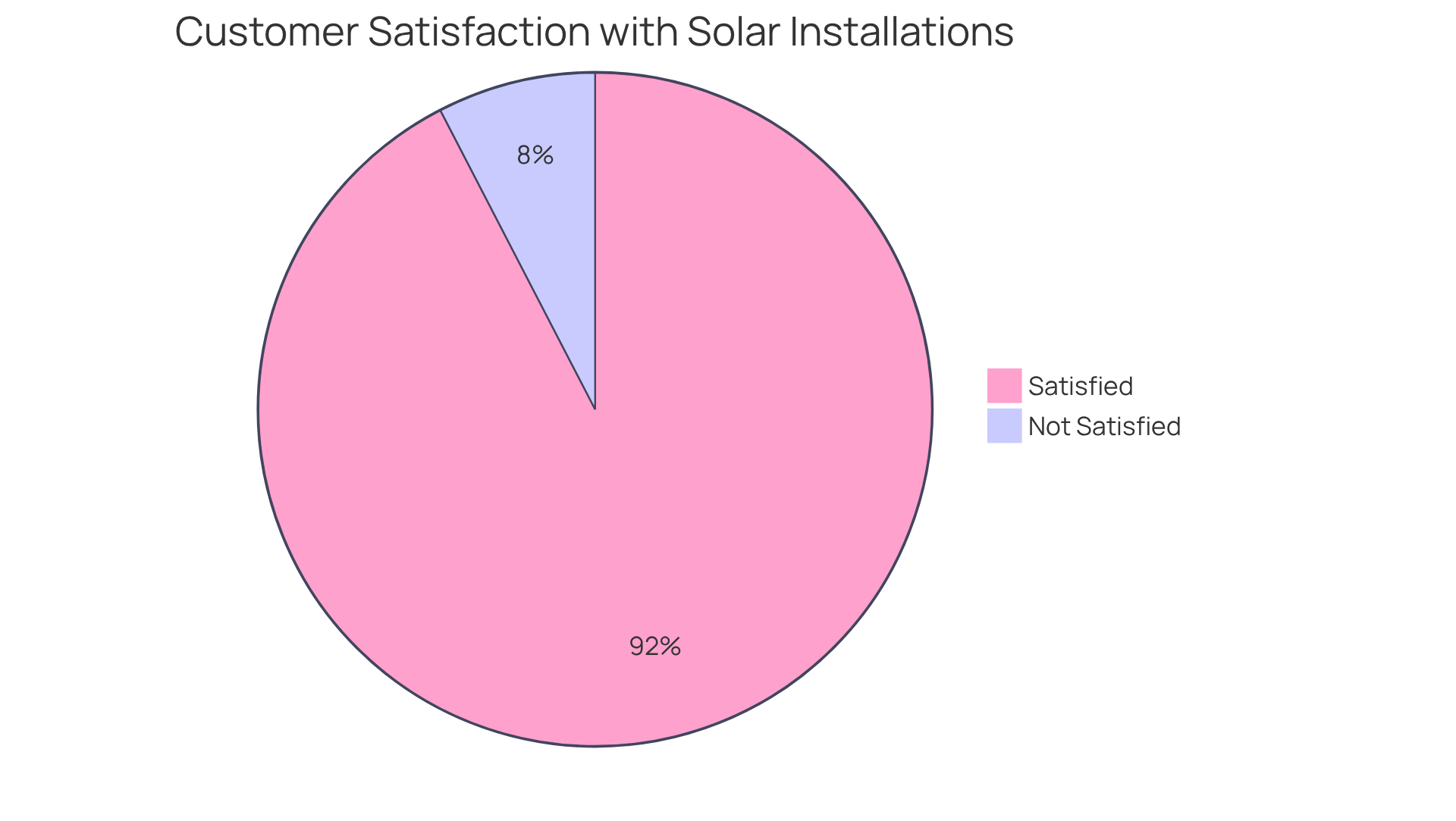Overview
In today’s world, many homeowners are understandably concerned about rising energy bills. Choosing solar power panels can be a significant step towards alleviating those worries and achieving energy independence. This article aims to provide you with essential tips for making an informed decision about solar panels, ensuring that you feel supported in your journey towards sustainable energy solutions.
When considering solar panels, it’s important to evaluate various factors that can impact your investment. You’ll want to look at panel types, such as monocrystalline versus polycrystalline, and consider their efficiency ratings. Warranties and local regulations also play a crucial role in ensuring that your system performs optimally and provides long-term savings on energy costs. We understand that navigating these choices can feel overwhelming, but rest assured, we are here to guide you through the process.
By investing in solar energy, you not only contribute to a healthier planet but also take control of your energy future. Imagine the peace of mind that comes with knowing you are reducing your carbon footprint while saving money on your monthly bills. Together, we can explore the benefits of solar energy and help you make the best choice for your home.
As you consider your options, remember that professional installation is key to maximizing the performance of your solar panels. It’s common to feel apprehensive about making such a significant investment, but with the right support and guidance, you can feel confident in your decision.
Let’s work towards a brighter, more sustainable future together. If you have any questions or need assistance, please don’t hesitate to reach out. Your journey to energy independence starts here, and we are eager to help you every step of the way.
Introduction
Choosing the right solar power panels for your home is not just a financial decision; it’s a meaningful step towards a sustainable future. We understand that with California leading the charge in renewable energy, you are presented with a unique opportunity to harness the sun’s power while potentially saving thousands on your energy bills.
However, it’s common to feel overwhelmed by the myriad of options available—from different panel types to installation services. What factors should you prioritize to ensure you make the best choice for your energy needs and financial goals?
Together, we can navigate this journey towards energy independence, ensuring that you feel supported every step of the way.
Powercore Electric: Expert Solar Panel Installation Services
At Powercore Electric, we understand that rising energy bills can be a significant concern for homeowners. For over 30 years, our family-owned company in Roseville, California, has been dedicated to providing reliable panel installation services tailored to your unique needs. We focus on creating and implementing personalized energy solutions that help you manage these costs effectively.
California is leading the nation in renewable energy, with over 52,270 MW of capacity powering nearly 14 million homes. In this thriving market, Powercore Electric stands out by ensuring that you receive high-quality installations and continuous support. The average cost of a photovoltaic system in California is approximately $20,294 before incentives, but with the federal tax credit reducing costs by 30%, you can expect to pay around $14,206. This financial incentive, coupled with potential long-term savings projected at $119,087 over 25 years, makes the switch to renewable power not just appealing, but a smart financial decision.
We believe that our commitment to outstanding service and community focus enhances customer satisfaction, establishing us as a trustworthy option for those looking to embrace sustainable energy solutions. Together, we can navigate the journey toward energy independence and create a brighter, more sustainable future for your home by utilizing home solar power panels. If you’re ready to take the next step, we invite you to reach out to us for guidance and support.
Evaluate Different Types of Solar Panels: Monocrystalline vs. Polycrystalline
When considering home solar power panels, we understand that homeowners often face the important decision between monocrystalline and polycrystalline options. Monocrystalline modules are celebrated for their exceptional efficiency, typically ranging from 15% to 22%, and their sleek, uniform design, making them particularly suitable for homes with limited roof space. On the other hand, polycrystalline modules, which generally offer efficiencies between 15% and 20%, are more budget-friendly but may require additional space for installation due to their slightly lower performance.
Most photovoltaic modules come with a reassuring 25-year guarantee, ensuring 90% efficiency for the first 10 years and 80% for 25 years. This is a crucial factor for homeowners contemplating long-term investments in home solar power panels as energy solutions. Recent advancements in photovoltaic technology have further bridged the efficiency gap, with some polycrystalline modules now reaching performance levels closer to their monocrystalline counterparts. For instance, manufacturers are developing polycrystalline modules with improved heat resistance and efficiency ratings, making them a sensible choice for those mindful of their budget.
By assessing your unique needs—such as available roof space, budget constraints, and energy goals—you can identify the most suitable type of home solar power panels for your residence. Many homeowners who prioritize aesthetics and efficiency often lean towards monocrystalline options, while those focused on cost savings may find polycrystalline alternatives more appealing. As the renewable energy market continues to evolve, understanding these differences will empower homeowners to make informed decisions that align with their energy needs and financial aspirations. Together, we can navigate this journey towards energy independence and sustainability.
Consider Efficiency Ratings: Maximize Energy Production
We understand that managing energy bills can be a significant concern for homeowners. Efficiency ratings play a crucial role in evaluating how well a solar device converts sunlight into usable electricity. As we look towards 2025, systems boasting efficiency ratings exceeding 20% are becoming increasingly common, allowing homeowners to generate more power even within limited roof space. For instance, high-efficiency modules like the Maxeon 7, which boasts an impressive efficiency of 24.1%, can dramatically enhance power production. This improvement can lead to substantial savings on electricity costs over time. Homeowners who choose to invest in home solar power panels can anticipate optimizing their energy output, with some systems projected to save over $80,000 in electricity expenses over a span of 25 years.
Furthermore, it’s anticipated that the average efficiency ratings of photovoltaic systems sold in California in 2025 will reflect these advancements, showcasing a trend towards higher performance. Case studies reveal that property owners who adopt high-efficiency photovoltaic systems have successfully reduced their reliance on the grid, fostering greater energy autonomy. By prioritizing efficiency ratings when selecting home solar power panels, homeowners can ensure they are making a sound investment that not only meets their energy needs but also contributes to long-term financial savings.
Experts in sustainable resources emphasize the importance of understanding these ratings, as they directly influence power generation and overall system performance. As the renewable energy market evolves, focusing on efficiency will be vital for maximizing energy production and achieving sustainable goals. Together, we can navigate this journey towards energy independence and a more sustainable future.
Check Warranties and Guarantees: Ensure Long-Term Reliability
When considering an investment in photovoltaic systems, we understand that you may have concerns about the warranties and assurances provided by producers. Most trustworthy solar modules offer a strong 25-year performance warranty, ensuring a designated energy output throughout their lifetime. Additionally, a product warranty typically covers defects and manufacturing problems, providing homeowners with peace of mind. It’s essential to carefully scrutinize the warranty terms to grasp the specifics of coverage, including duration and exclusions, ensuring that your investment is well-protected.
For instance, imagine a homeowner who faced significant panel degradation after ten years. Thanks to their warranty, they had their underperforming panels replaced at no cost. This scenario highlights the importance of selecting producers known for robust warranty options, as this choice can significantly impact the durability and efficiency of your energy system.
Industry professionals emphasize that warranties not only safeguard your investment but also enhance property value. Did you know that each dollar saved yearly through renewable energy can increase a home’s worth by $20? This makes a strong warranty an appealing aspect for prospective buyers. As solar technology continues to evolve, understanding the nuances of warranties becomes increasingly vital for homeowners aiming to maximize their investments in this energy source.
When evaluating warranties for photovoltaic systems, consider factors like:
- Warranty length
- Coverage specifics
- The producer’s reputation
Look for warranties that include labor costs for repairs or replacements, as this can save you additional expenses down the line. It’s also important to recognize that not all warranty claims are approved; compliance with warranty terms is critical. Maintaining thorough documentation of maintenance activities and repairs can support warranty claims. Consistent upkeep not only aids in maintaining the panels’ efficiency but also ensures that the warranties remain valid. By prioritizing these aspects, including the selection of optimal batteries that complement your system, together we can ensure you choose a solution that offers both reliability and long-term financial benefits.
Research Local Regulations and Incentives: Optimize Your Investment
Homeowners, we understand that contemplating the installation of renewable energy systems can feel overwhelming, especially when considering local regulations and available incentives. It’s essential to explore these aspects thoroughly to maximize your investment. In California, for example, various financial incentives, such as tax credits and rebates, are designed to encourage the adoption of renewable energy. The Self-Generation Incentive Program (SGIP) offers substantial rebates for battery storage systems, which can significantly alleviate upfront costs. By comprehending these programs, you can enhance your overall return on investment, making renewable energy sources more accessible and financially feasible.
Moreover, it’s common to feel uncertain about local building codes and permitting requirements. Being aware of these regulations is crucial for ensuring compliance and facilitating a smooth installation process. You can benefit from California’s commitment to renewable resources, which aims for 100% clean power by 2045. Together, let’s navigate these regulations—interacting with local energy specialists can provide you with personalized guidance to maximize the financial advantages of renewable energy. Remember, you are not alone in this journey; we’re here to support you every step of the way.
Prioritize Professional Installation: Ensure Optimal Performance
We understand that energy bills can be a significant concern for homeowners. Selecting expert installation for your panel system is crucial for attaining optimal performance and efficiency. Skilled installers, like those at Powercore Electric, possess extensive knowledge of photovoltaic technology and are adept at addressing potential issues that may arise during the installation process. They ensure adherence to local regulations and customize the system to meet your specific power needs, including storage solutions and roofing enhancements. This thoughtful investment not only enhances the performance of your photovoltaic panels but also minimizes maintenance challenges and extends their lifespan.
It’s common to feel uncertain about the transition to renewable energy, but effective installations by experienced experts demonstrate that proper setup can lead to substantial savings and improved reliability. Many property owners have discovered the benefits of expert installation, with homeowners reporting savings of 30-50% on their heating costs after optimizing their systems. As home improvement expert Nate Adams beautifully puts it, ‘The value of our home is greater; it is highly efficient, comfortable, and our cost of living is less monetarily.’ This statement underscores the financial advantages of choosing professional installation over DIY approaches.
With Powercore Electric’s commitment to exceptional service and local expertise, you can trust that your installation will be handled with unmatched quality workmanship. Together, we can ensure a sustainable power solution using home solar power panels for your home. Let’s work towards a brighter, more energy-independent future, where your home not only meets your needs but also contributes positively to the environment.
Incorporate Energy Storage Solutions: Enhance Solar Efficiency
Are you feeling overwhelmed by rising energy bills? Incorporating power storage options, especially battery systems, can greatly enhance the effectiveness of your photovoltaic setup. These batteries store surplus power generated during the day, making it accessible for use at night or during power failures. This capability not only improves your power independence but also optimizes the use of sunlight, effectively decreasing dependence on the grid and lowering electricity costs. Imagine achieving a remarkable 97% decrease in electricity costs, as seen in a recent energy system installation—this highlights the potential long-term advantages you can attain.
When choosing a battery for renewable power, it’s essential to evaluate its:
- Capacity
- Lifespan
- Efficiency
- Cost
to ensure optimal performance and resource savings. Solar storage systems can vary in price from $1,000 to $2,000 per kWh of power storage, with installation charges frequently about $3,000 or higher. High-quality batteries, such as those from reputable manufacturers like Bluetti and EcoFlow, often come with longer warranties, indicating better reliability and peace of mind.
We understand that navigating these choices can feel daunting, but Powercore Electric’s internal team of specialists offers customized service, guaranteeing that you obtain tailored solutions that address your specific energy requirements. Moreover, the projected Federal Tax Credit of $68,855 can greatly improve the financial attractiveness of investing in battery storage systems, making it a prudent option for sustainable living. By evaluating all options and considering ecological advantages, together we can make informed choices that support a cleaner, greener future.
Assess Total Cost of Ownership: Understand Long-Term Savings
Understanding the overall expense of owning home solar power panels is crucial for homeowners considering this important investment. We know that the costs can feel overwhelming, as they encompass not only installation but also ongoing maintenance and the potential savings on energy bills compared to traditional electricity. While the initial investment in home solar power panels can be significant, many homeowners find that these photovoltaic systems often pay for themselves within 10 years or less, due to substantial reductions in electricity bills. For instance, in areas where electricity costs are high, photovoltaic systems can yield an internal rate of return exceeding 20%, making them a financially wise choice.
Additionally, funding options such as photovoltaic loans and the federal tax incentive for renewable systems, which can reduce installation costs by 30%, enhance the economic viability of these renewable energy solutions. With an expected lifespan of about 30 years for home solar power panels, homeowners can enjoy years of clean energy and savings. Case studies reveal that a photovoltaic system in Massachusetts can recoup costs in just five years, while in regions with lower electricity rates, like North Dakota, the payback period extends to 12.5 years. Furthermore, insights from case studies on how homeowners benefited from residential energy systems under the 200% rule illustrate the real advantages of these investments.
It’s important for homeowners to consider their unique situations, including roof compatibility—homes with south-facing roofs and ample unshaded areas are ideal for home solar power panels installations—and local net metering regulations, which can significantly impact overall savings. By understanding these factors, along with the economic and environmental benefits of photovoltaic energy solutions, homeowners can make informed decisions about their energy investments. Together, we can achieve long-term financial gains and enhanced property value, ensuring a brighter, more sustainable future.
Read Customer Reviews and Testimonials: Gauge Brand Reliability
Before you embark on the journey of selecting a panel brand or installation firm, it’s essential to consider the voices of those who have walked this path before you. Customer reviews and testimonials can illuminate not only the reliability of the products but also the quality of service provided by the company.
For instance, many clients have praised Ryan and his team at Powercore Electric for their swift and effective installations, sharing their satisfaction and recommending their services to friends. A recent survey revealed that 924 out of 1,000 respondents felt ‘very satisfied’ or ‘mostly satisfied’ with their energy installations, highlighting the importance of positive feedback in your decision-making process.
As you read through reviews, look for consistent themes surrounding installation experiences, customer service, and the long-term performance of renewable energy systems. It’s noteworthy that nearly half of the participants who installed battery banks alongside their panels reported high satisfaction levels, suggesting that additional features can enhance the overall customer experience.
By taking the time to conduct thorough research—exploring online review sites, social media, and community forums—you can gather a wealth of diverse opinions. Moreover, don’t overlook financial incentives like the federal tax credit, which allows homeowners to claim 30% of their total project costs; this can significantly influence your purchasing decisions.
By performing diligent research, you can confidently choose a trustworthy brand like Powercore Electric that aligns with your expectations and needs, ultimately ensuring a successful transition to renewable resources.
Consult Solar Energy Experts: Get Tailored Advice for Your Home
We understand that navigating energy bills can be overwhelming, and contemplating a photovoltaic setup may feel daunting. At Powercore Electric, our caring experts are here to help you every step of the way. We analyze your home’s power needs, assess your roof’s compatibility for home solar power panels, and suggest customized products and solutions that not only save you money but also protect your home. Our team’s knowledge simplifies the complexities of photovoltaic technology, funding options, and local regulations, ensuring you make informed choices that align with your energy goals.
With California deriving nearly 40 percent of its electricity from solar energy, the importance of professional guidance cannot be overstated. It’s common to feel uncertain about the increasing need for solar power, especially given its 25% annual growth over the last decade. However, investing in consultation can lead to significant long-term savings on utility costs and enhance your home’s value. Together, we can explore how customized solutions involving home solar power panels can address your unique challenges, such as optimizing panel placement for maximum sunlight exposure or incorporating storage systems for added reliability during outages.
By reaching out to the solar energy experts at Powercore Electric, you can confidently transition to sustainable energy practices. This journey not only reduces your carbon footprint but also fosters energy independence, empowering you to take control of your energy future. Let’s work together towards a brighter, more sustainable tomorrow.
Conclusion
We understand that the rising costs of energy bills can be a significant concern for homeowners. Choosing the right home solar power panels is not just a practical decision; it’s a meaningful step towards energy independence and sustainability. This journey involves understanding various factors, from evaluating panel types and efficiency ratings to considering warranties and local regulations. By making informed decisions, you can effectively navigate the complexities of solar energy and capitalize on the long-term financial benefits that come with it.
Throughout this article, we’ve outlined essential tips to support you in this process. Consider the importance of selecting between monocrystalline and polycrystalline panels based on your efficiency needs and budget. Ensure robust warranties for your peace of mind, and take advantage of local incentives to optimize your investments. Professional installation plays a crucial role in maximizing system performance, while incorporating energy storage solutions can enhance overall efficiency and reliability.
As the renewable energy landscape continues to evolve, embracing solar power not only contributes to a cleaner environment but also fosters significant savings on energy bills over time. We encourage you to consult with experts who can help tailor solutions that meet your unique needs, ensuring a smooth transition to renewable energy. Together, we can play a pivotal role in shaping a sustainable future, one solar panel at a time. Let’s work towards a brighter, more sustainable tomorrow.
